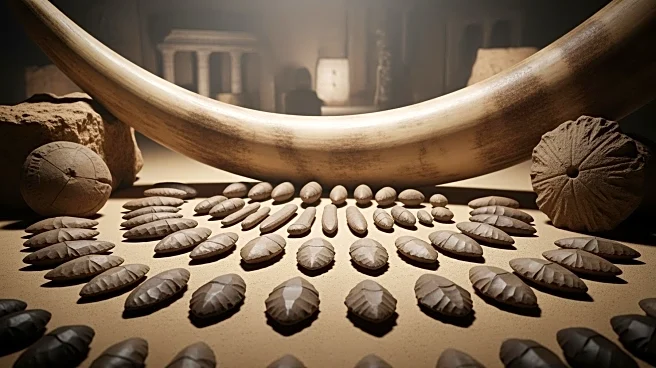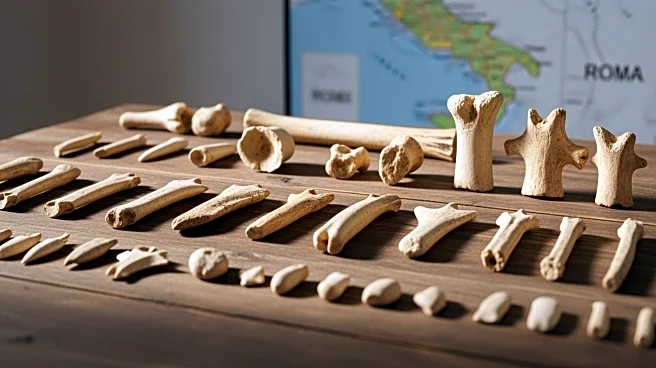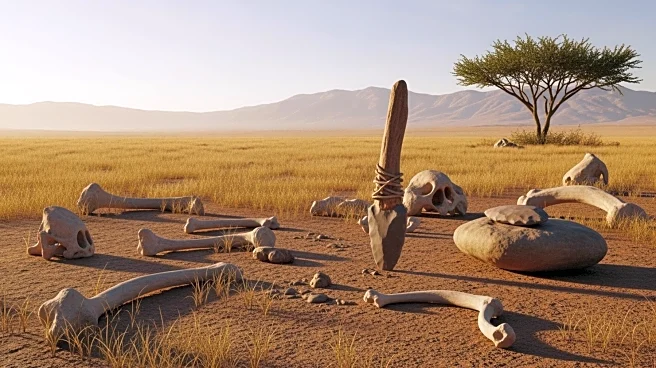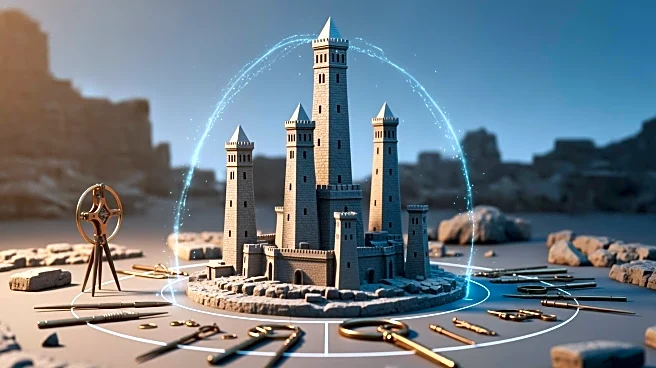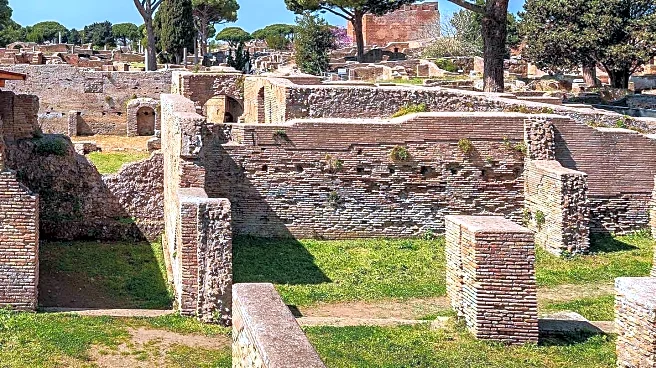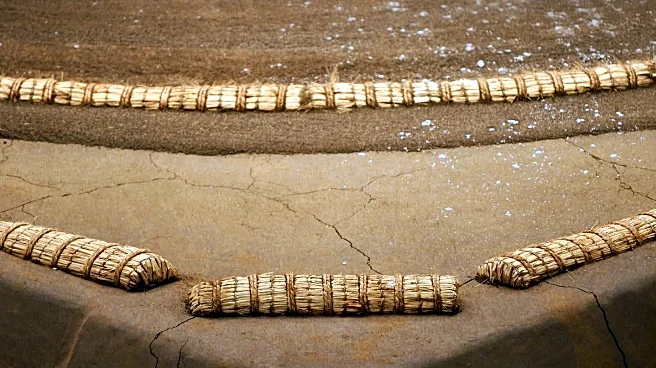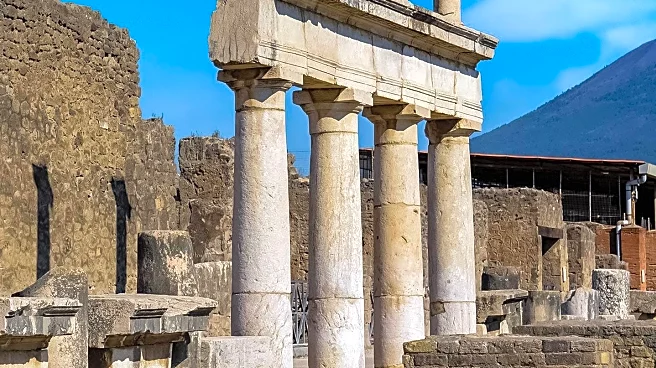What's Happening?
Archaeologists in Rome have uncovered a site dating back 404,000 years where early humans butchered an elephant using small stone tools. The discovery, made at the Casal Lumbroso site, includes over 500
artifacts and more than 300 bones from a single straight-tusked elephant. The findings suggest that early humans not only used elephants for food but also crafted tools from their bones. This site, along with others in central Italy, indicates a recurring survival strategy among ancient humans during the Middle Pleistocene, a period marked by warmer environmental conditions. The research, led by Beniamino Mecozzi of Sapienza University of Rome, highlights the sophisticated methods employed by early humans to secure food and raw materials.
Why It's Important?
This discovery sheds light on the advanced survival strategies of early humans, demonstrating their ability to utilize available resources effectively. The findings provide valuable insights into the interactions between humans, animals, and ecosystems during the Middle Pleistocene. By understanding these ancient practices, researchers can better comprehend the evolution of human ingenuity and adaptability. The study also emphasizes the significance of central Italy as a key region for archaeological research, offering a glimpse into the complex behaviors of early hominins and their impact on the environment.
What's Next?
Further analysis of the Casal Lumbroso site and similar locations in central Italy could reveal more about the technological advancements and social structures of early human communities. Researchers may continue to explore how these ancient practices influenced the development of human societies and their relationship with the environment. The study opens avenues for interdisciplinary research, combining archaeology, anthropology, and environmental science to reconstruct the lifestyles and survival strategies of early humans.
Beyond the Headlines
The ethical and cultural implications of this discovery are profound, as it challenges modern perceptions of early human societies. The ability to transform animal remains into tools reflects a level of ingenuity and resourcefulness that parallels contemporary technological advancements. This research invites a reevaluation of the cultural and intellectual capabilities of ancient humans, offering a deeper understanding of their contributions to human evolution.
